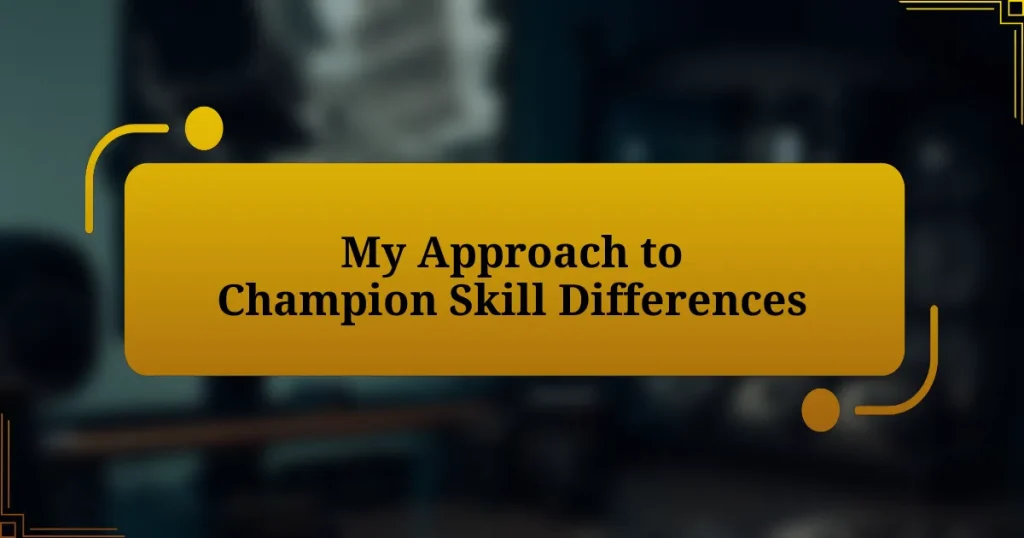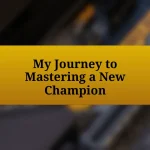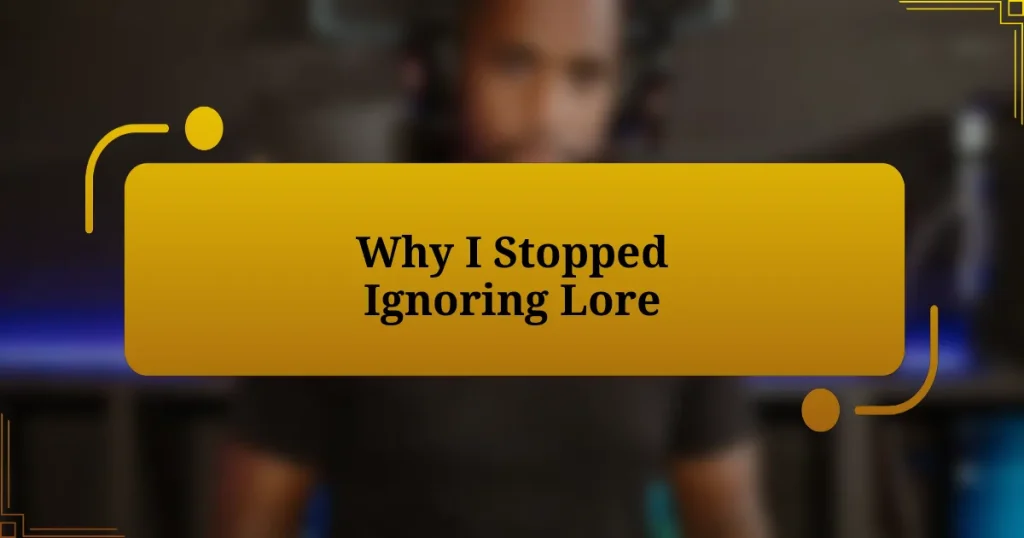Key takeaways:
- Understanding champion abilities and playstyles is essential for success in League of Legends, as each champion has unique strengths that can influence game dynamics.
- Adapting one’s playstyle based on teammates’ skills and opponents’ advantages can turn the tide of a match, emphasizing the importance of teamwork and strategy.
- Personal experiences with various champions highlight the balance of risk and reward, showcasing the emotional journey and learning curves players face.
Author: Clara M. Ashford
Bio: Clara M. Ashford is an award-winning author known for her captivating literary fiction that explores the complexities of human relationships and the intricacies of personal identity. With a background in psychology and a passion for storytelling, Clara weaves rich narratives that resonate with readers on a profound level. Her debut novel, Whispers of the Heart, garnered critical acclaim and was shortlisted for the National Book Award. When she’s not writing, Clara enjoys hiking in the mountains of Colorado and volunteering at local literacy programs. She lives in Denver with her two adventurous dogs.
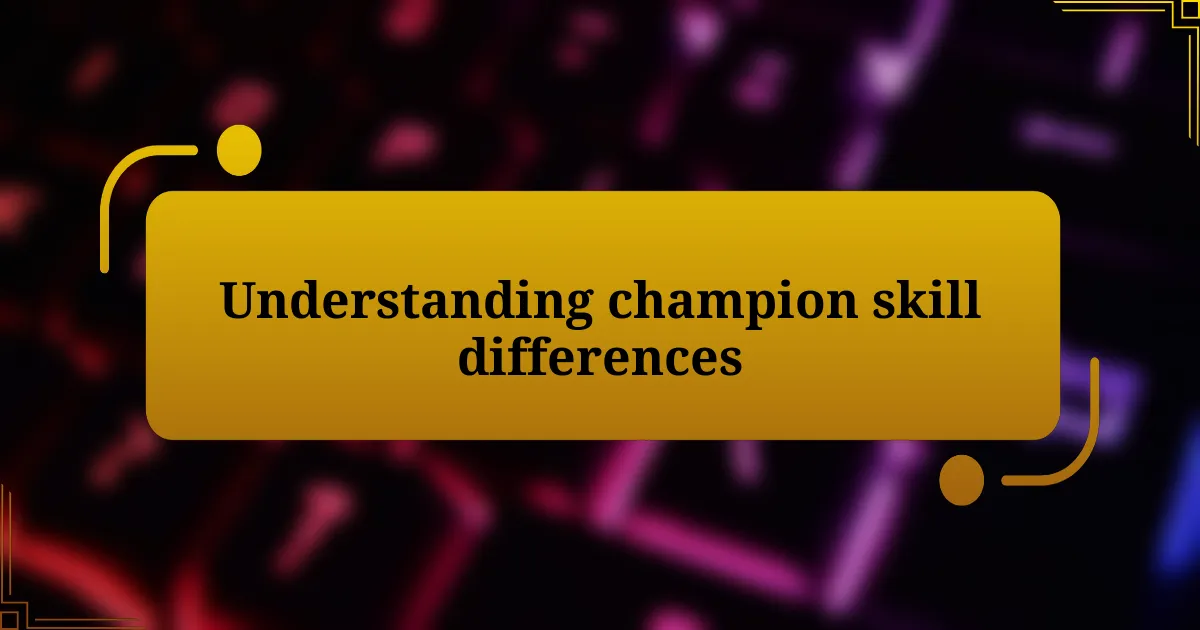
Understanding champion skill differences
Understanding champion skill differences is crucial for mastering League of Legends. Each champion possesses unique abilities that impact gameplay drastically. I remember the first time I played against a Zed; his burst damage and mobility left me bewildered. It was a stark reminder of how different playstyles can dictate match outcomes.
When I think about skill differences, I often consider the role of crowd control. Champions like Leona can turn the tide of battle with a well-timed engage, leaving opponents helpless. Have you ever felt the rush of a perfect lockdown play? It’s exhilarating and emphasizes the importance of not just understanding your champion’s skills, but also recognizing those of your opponents.
There’s also the aspect of skill expression, where a single ability can be executed in so many ways. I used to struggle with skill shots, but practice helped me appreciate the nuances involved. It’s fascinating how a champion’s complexity can challenge a player to grow; it’s a journey that encourages both persistence and creativity.
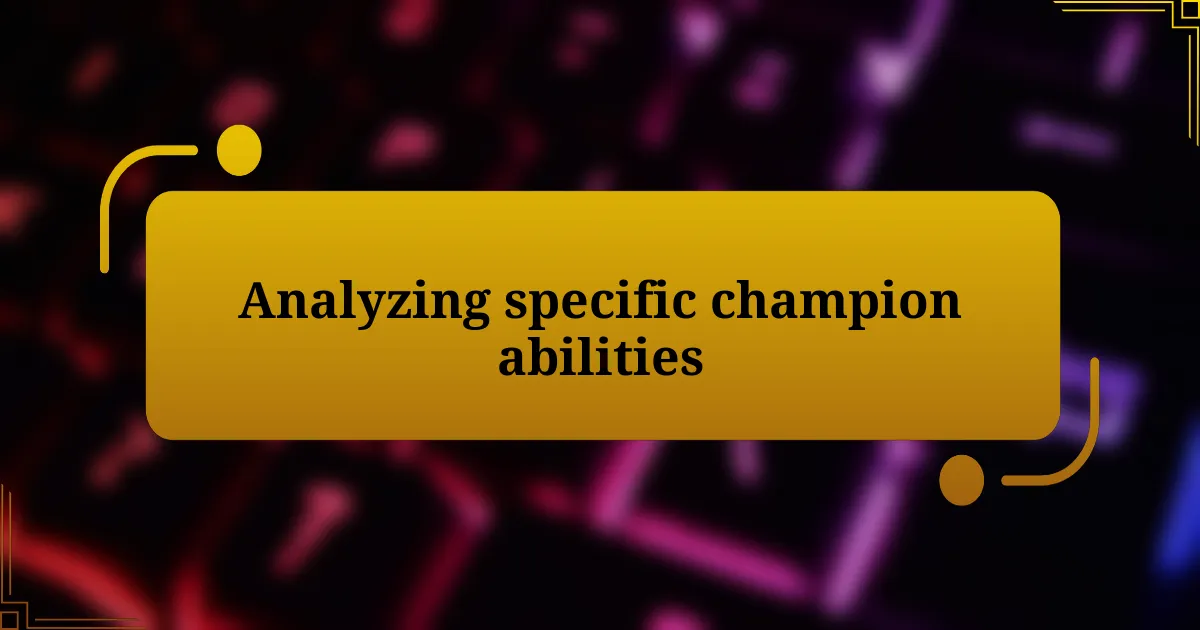
Analyzing specific champion abilities
Champions in League of Legends each have unique abilities that can completely alter the dynamics of a match. For instance, when I first played as Pyke, I was captivated by his ability to execute low-health enemies with his ultimate, Death from Below. That moment when I popped into the shadows, waiting for the right time to strike, was thrilling; it taught me that understanding timing and positioning is key to maximizing potential.
Take Lux, for example. Her Light Binding can snare multiple enemies, creating opportunities for her team to capitalize on a fight. I remember a game where I landed a perfectly timed bind right as their carry tried to escape, and the feeling of contributing to the team’s success was invigorating. It’s these moments that make analyzing specific abilities so rewarding—we need to appreciate the timing and creativity required to wield them effectively.
On the other hand, some abilities can feel overwhelming at first. When I played against a well-coordinated team with multiple champions boasting crowd control, I often found myself frustrated. But it also pushed me to learn more about champions like Thresh, who can both save allies and snare enemies. Have you ever had a moment where mastering a champion’s ability felt like unlocking a new level of gameplay? It’s these learning curves that not only deepen our understanding but also enhance our enjoyment of the game.
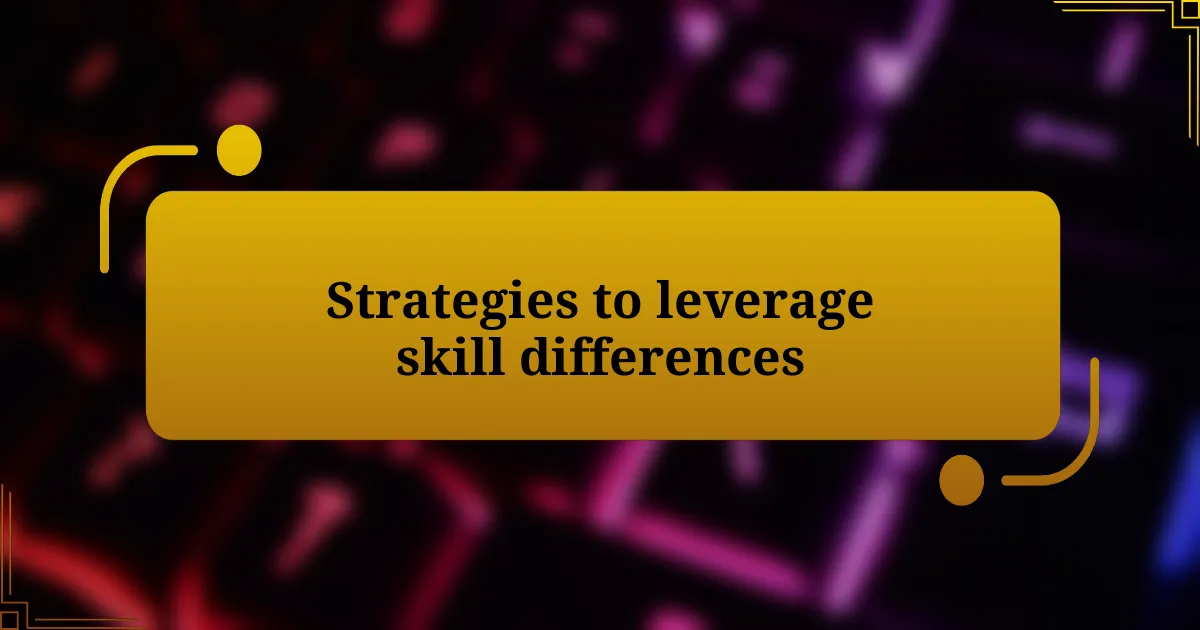
Strategies to leverage skill differences
To effectively leverage skill differences, I find it crucial to adapt my playstyle based on both my own strengths and those of my teammates. For example, when I realize I’m matched with a less experienced player, I take on a more supportive role, guiding them through objectives and explaining the nuances of each encounter. This not only fosters teamwork but also allows me to shine in the areas where I feel most confident.
Have you ever found yourself in a game where a highly skilled player on your team managed to turn the tide? I recall a match where I was paired with an incredible ADC who carried the game while I focused on crowd control as a support. My role became clear: I protected this powerhouse while setting up plays. Learning to recognize and amplify the strengths of others is a game-changer.
On the flip side, when facing opponents with a skill advantage, I’ve learned to play defensively and focus on punishing their mistakes. I remember a match where I faced a skilled Zed, and instead of trying to outplay him, I focused on avoiding his damage while waiting for my own opportunities. By doing this, I shifted the pressure away from myself, ultimately leading to a comeback when our team’s synergy took over. Isn’t it fascinating how sometimes, playing smart is just as important as having superior mechanics?
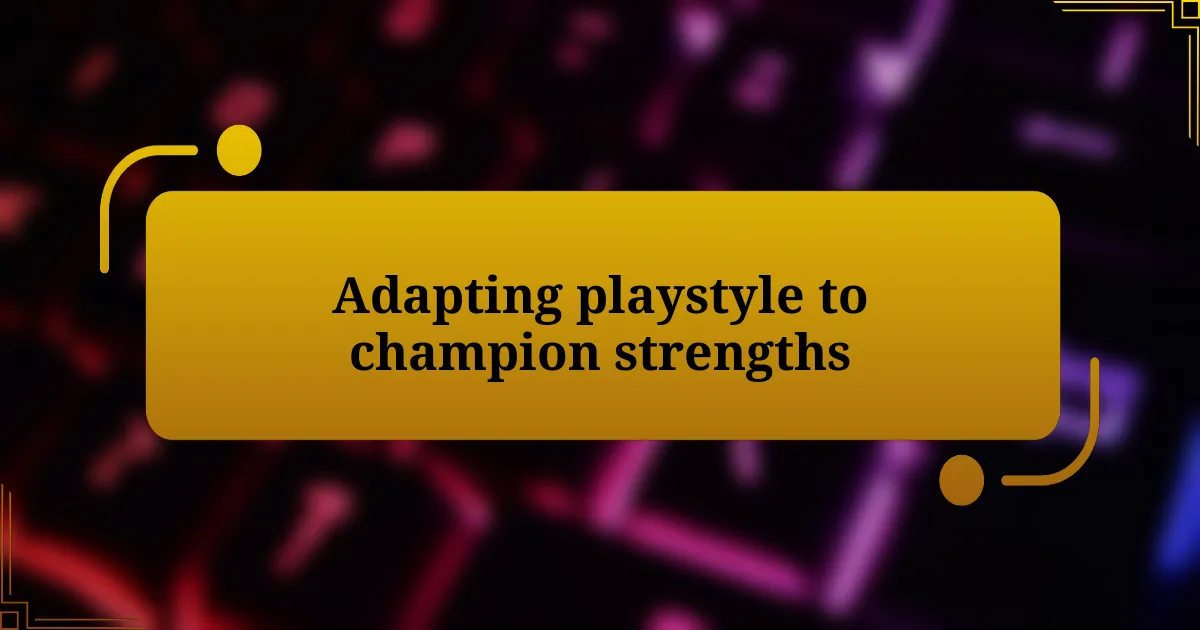
Adapting playstyle to champion strengths
Recognizing the unique strengths of each champion is essential to tailoring my playstyle effectively. For instance, while playing as a tanky champion like Leona, I often find myself initiating fights. This role feels empowering and important; there’s a thrill in diving into the enemy team and soaking up damage for my carries. It’s a stark contrast to my usual approach as a glass-cannon champion, where I prioritize dealing damage but lack that fearless edge.
The times I’ve played as Azir, I’ve had to pivot from an aggressive strategy to a purely positional one. It was a match where I found myself caught too far up, getting punished by enemy ganks. From that moment, I realized the importance of maintaining distance while still providing poke and utility for my team. Doesn’t it feel like a dance, adjusting your steps to the rhythm of your champion’s capabilities while also considering the flow of the game? I take a deep breath and remember that sometimes the best play is to stay back and let my allies do the heavy lifting.
There have been instances where adapting my strategy based on the enemy’s champion selection has been a game-changer. I vividly recall facing a Nasus in the top lane. Instead of trying to out-trade him, I focused on wave management and vision control. This experience taught me the value of patience and strategic gameplay—the moments where I chose not to engage were the ones that ultimately turned the tide for our team, as we later capitalized on an overzealous push. Isn’t it fascinating how understanding champion dynamics can transform not just individual performance but the whole game’s outcome?
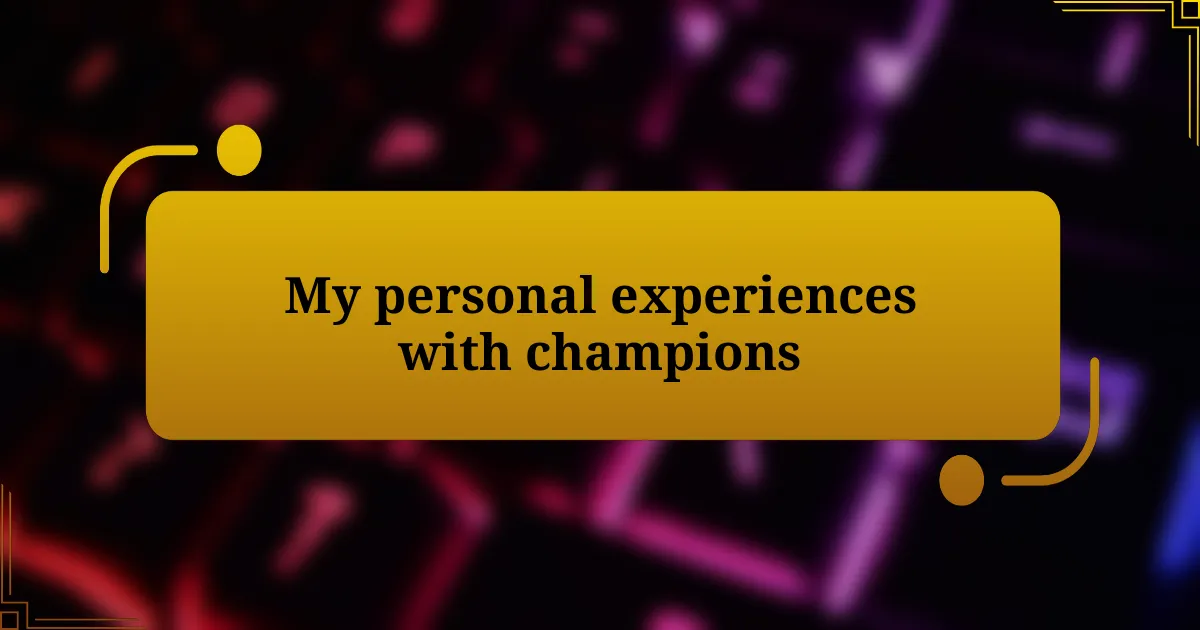
My personal experiences with champions
When I first started playing Yasuo, I remember the excitement mixed with a hefty dose of fear. I quickly learned that mastering his wind wall could mean the difference between life and death in a team fight. It was exhilarating to block critical enemy abilities, but I also faced substantial pressure knowing that one misstep could lead to my team’s downfall. Have you ever felt that adrenaline rush when you’re just one crucial play away from victory?
On another occasion, I had an unforgettable experience playing Nami in a ranked match. I was initially hesitant about my ability to impact the game from a support role, but I quickly realized how vital my crowd control and healing were to my team. It was heartwarming to watch my carries flourish while I kept them alive with precisely timed heals. How rewarding is it to know that your presence directly influences your team’s success?
In contrast, my time with Riven was an emotional rollercoaster. While her mechanics were incredibly rewarding to master, I often struggled with the pressure to carry the game. I vividly recall a match where I overcommitted during a skirmish, leading to a devastating loss. That experience taught me humility and reinforced the idea that every champion has its strengths and limitations. Have you ever found yourself in a similar situation, grappling with the fine line between confidence and overextension?











